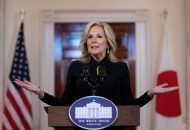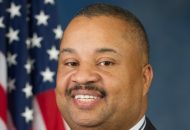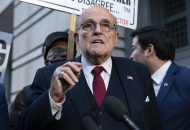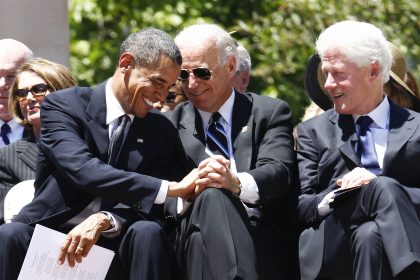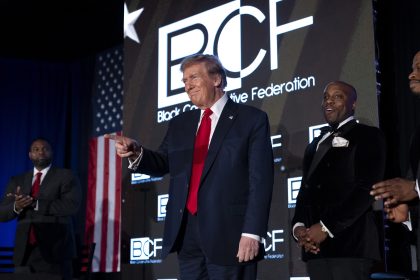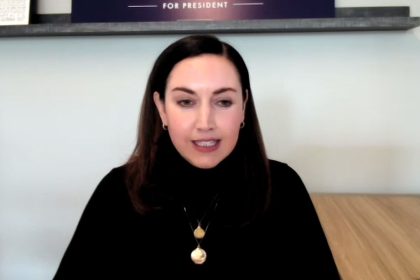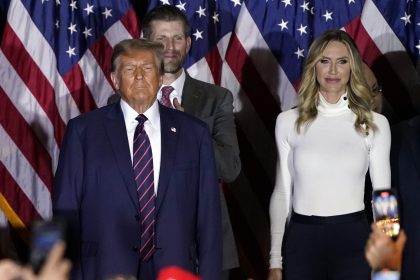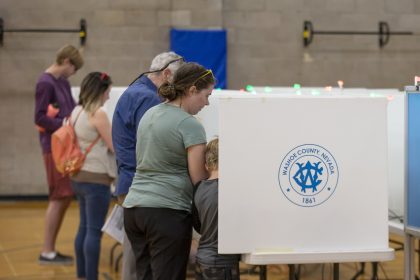Coronavirus Changes Nature of Campaign Planning and Spending

WASHINGTON – There’s no question that the coronavirus outbreak that began in earnest in March profoundly affected the nature of politicking ahead of one of the most consequential elections in modern times.
For instance, the latest batch of Federal Election Commission filings, released Wednesday, show that the candidates at the top of their respective party tickets, President Donald Trump and former Vice President Joe Biden, sharply curtailed their spending as the pandemic took hold.
Biden’s campaign spent just $12.9 million, compared to Trump’s $7.7 million in April, their lowest monthly spend of the year so far.
For comparison’s sake, it should be noted that the combined total for the two candidates was nearly $13 million less than Trump and Democratic frontrunner Hillary Clinton spent in April 2016.
A similar tale can be told about candidates further down the ticket, who saw their personal appearances dry up as stay-at-home orders were put in place in many states. Soon, the records suggest, their lives became an endless round of Facebook Live and Zoom events.
“This has definitely been a time when we’ve had to be a little bit more creative on how to get the candidate in front of voters and donors,” said David Watts of Double Eagle Strategies in Alexandria, Va.
“What’s been interesting is that for most of the past nine weeks, the pandemic has kept members in their districts and that’s given them the chance to do lots of Zoom meetings with their constituents,” he said.
“In some communities, the Zoom meeting has become the new door-to-door reach tool because you can’t take a candidate door-to-door anymore,” Watts said.
He went on to explain that typically a candidate will send an email to a list of his or her core supporters, asking if they’d like to participate in a campaign update. If they are agreeable, the number of participants can rapidly ramp up.
“Thank God for modern technology, because it has really allowed people to stay in touch with constituents,” Watts said.
“The other thing a lot of members did — and this is entirely dependent on the lockdown status of their state — was a ton of community service, trying to help out by distributing hand sanitizer and face masks, answering questions about coronavirus relief, and the like,” he added.
The consultant conceded the situation has left this year’s political novices at a decided disadvantage, “because you need that personal touch when you’re trying to make a good first impression.
“You need to get out in front of as many people as possible and get them comfortable seeing you as their next congressman or congresswoman. Achieving that same thing with technology is hard… it’s just really hard,” Watts said.
Ides of March Brings Tidal Wave of Requests for Virtual Services
Travis Trawick, founder of RoboCent in Virginia Beach, Va., said things were going along normally for his multifaceted election services business, when suddenly there was a huge spike in demand for the company’s Tele-Town Hall and Peer-to-Peer text messaging services.
Trawick said he started hearing about the coming pandemic in February and assumed his business might decrease slightly in the near-term.
“Instead, beginning in March, we were flooded with incoming requests from political campaigns who had decided to start reaching out to voters virtually.
“The biggest change was a 300% increase in demand for our Tele-Town Hall services, which allow customers to host virtual, phone-based, town halls with their voters or constituents,” Trawick said. “So far this year, we have run dozens of these events for members of Congress, senators, and attorneys general across the country who wanted to continue to campaign and reach voters.
“Beyond this, we’ve also seen an increase in demand for our P2P text messaging platform, SMS Connect, because of its effectiveness in reaching voters directly,” he said.
Asked whether incumbents use the technologies differently from their challengers, Trawick said he believes they do, though both have been talking extensively about the pandemic.
The difference, he said, is that incumbents have used his virtual town halls and other tools to communicate their positions on bringing about real change or specific actions addressing the pandemic.
“[Incumbents] send out a lot of pandemic-related updates and messaging on their legislative priorities for dealing with the crisis,” Trawick said. “Their challengers, on the other hand, talk about what they would do if elected.
“If there’s a real advantage for the incumbent, it’s that they can ask their supporters and potential supporters what they would like to see implemented and begin working on those concerns almost instantly,” he added.
Trawick said the challenge in all this from the candidate’s perspective isn’t getting used to a new kind of campaigning, but deciding how to approach the coronavirus and issues surrounding it.
“We have some clients that are lowering their volume to avoid politicizing a global pandemic, but others who are correctly, in our opinion, using the technology to its greatest advantage — informing the electorate.”
He also said he believes the pandemic will condition even those who were technology skeptics to adopt some use of virtual and text messaging for years to come.
“It’s already part of the landscape,” he said. “I think the pandemic has only helped to make it more so.”
Issues On Hold, Whole New Fall Potentially On Tap
Watts, who is working with Rep. Don Bacon’s re-election campaign in Nebraska, among others, said the pandemic has made the dealing with donors’ piece of campaigning particularly challenging.
“It’s an area where you not only have to be creative, you also have to be sensitive to the situation,” he said. “We all know, people are hurting.
“So what you’re seeing on the donor side is a lot of candidates doing little more than checking in and seeing how their donors are doing,” Watts continued. “The hard ask is out.”
But he went on to say an even bigger change has occurred since the onset of the pandemic — and one that has nothing to do with either technology or human sensitivities — candidates up and down the ballot now have to rethink when they want to roll out big issues.
“Basically, if you’re a candidate or a campaign, you’re in a holding pattern right now,” he said. “I mean, the calendar that you put together at the beginning of your campaign, with specific target dates for when you were going to do specific activities, all that stuff is out the window.
“One thing I’m looking at, for instance, is what all the new election rules will look like in each of the states,” Watts said.
“If everyone decides to vote by mail, that’s going to completely change how you run your campaign,” he said “Why? Because it essentially changes the election date.”
Watts explained that the way the process works in most states is that voters have to request a ballot to vote by mail. “Once they do, the campaign has to go to each county in the state and get a list of everyone who has requested a ballot,” he said. “From there, you try to figure out which people who requested a ballot are for you and which are for them.
“Then, to put this in the simplest terms, we chase those people who we think are for us and encourage them to mail their ballot in for us,” he continued. “So what happens in a scenario like that is, you’re election day isn’t November 3, it’s actually the first day that a person can return their mail-in ballot.”
Given the entire process, Watts said if mail-in balloting is widely used in the fall, then the real election day will be somewhere around Oct. 1, when absentee and mail-in voters would start casting their ballots.
“From a campaign perspective, it effectively means you’re starting your get out the vote effort in September if you want it to have maximum effect,” he said.
When it was suggested all this is a long way from showing up and making sure people have a ride to the polls, Watts laughed.
“Yeah,” he said. “There’s no more driving people to the polls.”









